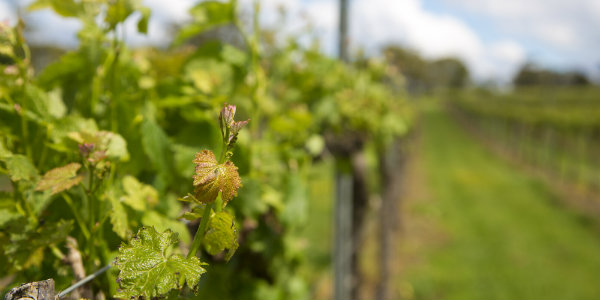Drought and Wines – what it means for quantity & quality?
October 5, 2018 7:22 pmDid you know that the Australian wine industry is worth over $5 billion? Yes, $5 billion. That’s nothing to be sneezed at. So when there are climatic changes that could affect the industry, it’s a serious matter and not just for producers.
The recent drought that has the broader farming community in its grips and garnered considerable awareness has also affected wine producers across Australia. The climate changes are not only confined to Australia but are also affecting Napa Valley in the US and Bordeaux in France, where both regions underwent recent dry periods.
For the year to date, rainfall figures for our Southern Highlands are about 42% below average and as we head into Spring and our vines come into budburst, it led me to think, what is the impact of drought on grapevines and the overall quantity and quality of the wine produced?
A recent study of the Napa Valley and Bordeaux has shown that grapevines can be drought tolerant and resilient. The grapevine’s hardiness during such tough periods is one of the reasons for the industry’s tenacity and enduring success. People’s ongoing desire to drink wine also helps, (I think) somewhat.
However, even though grapevines can survive a thirsty spell with minimal watering, it does not guarantee that they will still make enough grapes to keep wine glasses full. Thirsty grapevines can run into trouble, especially when they try to suck up water from dry ground. The study showed that grapevines start to shed their leaves only when their ability to circulate water and nutrients is reduced by about 50 percent. This is due to lower water pressure in their stems and roots and can prove to be fatal for the plant. Under this stress, the vines push really hard to draw water & can form air bubbles in tissues that circulate the water from the roots. The air bubbles stop the sap from flowing into the vines, and they start losing leaves and can eventually kill the vine.
There is also a direct correlation between the amount of water a vine receives and the fruit it will yield. To put it simply, 80% less water equals 80% less fruit, therefore impacting the overall productivity of the vineyard and the cost of the producing the wine.
In times of drought, small producers are the ones most likely to be affected. To overcome the lack of rainfall and potential lack of grapes, small producers either need to irrigate their vines (depending on the circumstance at a high cost) or purchase grapes from other growers.
Drought can also bring warmer weather and depending on the timing, lead to early ripening of the grapes. As such, this climatic combination sweetens the fruit and will yield a wine with higher alcohol levels. In some cases, this produces wines with more body or fuller flavours, depending on the variety.
Many years ago, we installed an irrigation system at St Maur, in case the vineyard was under stress from drought or lack of rainfall. (Thinking back on the rains of years past, this would never be an issue here in the Highlands.) Irrigation is drawn from dams on the vineyard, and we have the ability to ensure that our vines have sufficient water to keep producing a good yield and that sugars in the grapes when harvested and pressed, are at optimum levels.
It’s true that climate change is a challenge the Australian wine industry faces, but it would be alarmist to suggest that it signals the beginning of the end to Australian wines as we know them.
While knowing how grapevines respond as they cope with dehydration and less rainfall will prove crucial as droughts become more severe with climate change, Australians have long proved that necessity is the mother of invention. With that maxim in mind, if lack of rainfall continues to be an issue, I believe the coming years are sure to be characterised by innovative methods in viticulture and the production of wines.
Our investment in years past will hopefully ensure the next vintage continues to deliver St Maur wines of outstanding quality and we pray that the heavens open up for the broader farming community, here and overseas.
And if you’re a little dry, do as I do; pray to and enjoy a glass of St Maur, in moderation.
As always, salute!
Marco
This post was written by St Maur Wines


